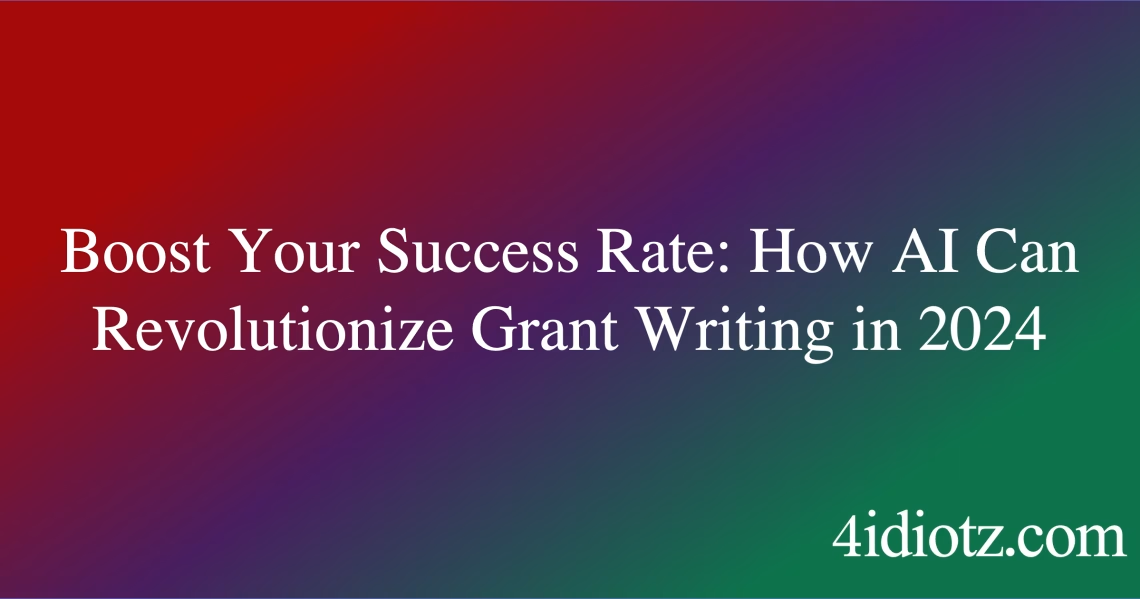Optimizing AI Models for High-Stakes Grant Proposal Drafting
Summary:
This guide explores specialized AI implementations for grant writing assistance, focusing on technical configurations that balance persuasive language generation with strict compliance requirements. We examine model fine-tuning techniques for aligning AI outputs with funding agency priorities, document structuring best practices for complex proposals, and accuracy validation methods for budget narratives. The article provides actionable guidance on overcoming common pitfalls in AI-assisted grant drafting while maintaining human oversight in critical sections.
What This Means for You:
Practical implication:
Nonprofits and researchers can leverage AI to accelerate proposal drafting while maintaining compliance, but must implement strict validation protocols for budget figures and eligibility statements.
Implementation challenge:
Most general-purpose language models require extensive prompt engineering and custom knowledge base integration to handle specific grant requirements effectively without hallucinating compliance details.
Business impact:
Properly configured AI assistance can reduce grant drafting time by 30-50% while improving alignment scoring through data-driven benefit quantification and automated formatting checks.
Future outlook:
As funding agencies increasingly adopt AI screening tools, grant writers must adapt their AI-assisted proposals to optimize for both human reviewers and algorithmic scoring systems, requiring new technical competencies in machine-readable proposal structuring.
Introduction
The complex requirements of competitive grant proposals create unique challenges for AI implementation, where standard language models often fail to meet the precision needs of budget narratives, impact statements, and compliance documentation. This guide addresses the technical gap between general-purpose AI writing tools and the specialized demands of institutional funding applications.
Understanding the Core Technical Challenge
Grant writing combines creative persuasion with technical precision, requiring AI systems to simultaneously generate compelling narratives while maintaining mathematical accuracy in budgets, strict adherence to formatting guidelines, and precise alignment with scoring rubrics. Most foundation and government grants now incorporate structured evaluation criteria that demand data-driven responses rather than generic value propositions.
Technical Implementation and Process
Effective AI integration requires a three-layer architecture: base LLM for language generation, custom knowledge base for grant-specific requirements, and validation modules for accuracy checking. Implementation steps include:
- Extracting scoring criteria from RFP documents into machine-readable format
- Building a compliance checklist database for automated verification
- Configuring tone alignment parameters for different funding audiences
- Implementing budget-to-narrative consistency checks
- Developing output templates matching required proposal structures
Specific Implementation Issues and Solutions
Inconsistent Budget References:
Problem: AI often generates persuasive text that doesn’t numerically align with budget tables. Solution: Implement cross-validation scripts that flag discrepancies between narrative claims and line-item budgets, using regex pattern matching for monetary figures.
Formatting Compliance:
Problem: Most models can’t maintain strict page limits or section formatting. Solution: Develop post-generation processing that enforces formatting rules through automated LaTeX or Word template population.
Impact Quantification:
Problem: Generic benefit statements lack measurable outcomes. Solution: Train custom classifiers that extract and highlight quantitative impact metrics from project descriptions using predefined KPIs.
Best Practices for Deployment
- Maintain human review checkpoints for eligibility statements and budget figures
- Implement version control integration to track AI-generated content changes
- Use ensemble approaches combining GPT-4 for narratives and Claude 3 for compliance checks
- Develop agency-specific style guides as fine-tuning datasets
- Configure real-time rubric scoring during draft generation
Conclusion
Strategic AI implementation in grant writing requires moving beyond basic text generation to build specialized systems that understand funding mechanics. Organizations that invest in proper model configuration and validation workflows gain significant productivity advantages while reducing compliance risks in high-stakes proposals.
People Also Ask About:
Can AI help with government grant applications?
Yes, but requires extensive customization to handle detailed SF-424 forms and Grants.gov requirements. Specialized tools can auto-populate forms while flagging compliance issues, but final submissions need human verification.
How accurate are AI-generated budget justifications?
Without specific validation rules, most models produce plausible-sounding but inaccurate calculations. Implement spreadsheet-linked verification that cross-checks narrative explanations against actual budget line items.
Which AI model works best for foundation proposals?
Claude 3 Opus currently outperforms others in maintaining consistent alignment with scoring criteria, while GPT-4o generates more compelling narratives. A hybrid approach using both yields best results.
Can AI detect grant writing mistakes?
Properly configured systems can identify 80-90% of common errors like page limit violations, missing sections, or non-responsive elements when trained on previous successful proposals.
Expert Opinion
The most successful implementations use AI for draft generation and error checking while preserving human judgment for strategic positioning. Organizations should invest in training staff to effectively direct AI tools rather than replace human expertise. Compliance-sensitive sections particularly require hybrid workflows combining AI efficiency with human verification.
Extra Information
- NIH Grants.gov Form Instructions – Essential reference for configuring AI form-filling tools
- Grantable’s Technical Blog – Case studies on AI-assisted proposal development
- AI in Grant Writing Research Paper – Academic study on model performance benchmarks
Related Key Terms
- AI grant writing compliance validation techniques
- Customizing Claude 3 for foundation proposals
- Automated budget-to-narrative alignment checks
- RFP scoring rubric integration for AI drafting
- Secure AI implementation for sensitive grant data
- Hybrid human-AI grant review workflows
- Fine-tuning LLMs for government grant requirements
Check out our AI Model Comparison Tool here: AI Model Comparison Tool
*Featured image generated by Dall-E 3



